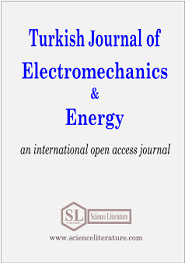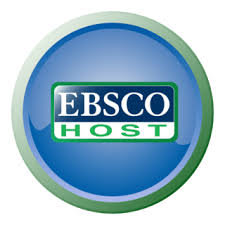Author Guidelines
Manuscript template for Turkish Journal of Electromechanics and Energy
A. A. One1,*, A. B. Two2, A. C. Three3
ABSTRACT
This document gives formatting directives to copy editors and authors preparing papers for publication in the journal. This paper must not be used any other purposes. Authors are encouraged to prepare manuscripts directly using this template. This template demonstrates format requirements for the Journal. The abstract should state briefly the purpose of the research, the principal results and major conclusions. The abstract should not exceed 250 words and should be 10 pt. Authors should be avoided to give references in this section and also, should be avoided non-standard or uncommon abbreviations, but if essential they must be defined at their first mention in the abstract itself.
1. INTRODUCTION
This paper is a template for Copy Editors and Authors. If you are reading a paper or PDF version of this template, please download the file from the Science Literature web site at http://www.scienceliterature.com. Thus, you can use it to prepare your manuscript. In this section, please provide an adequate background with presentation a detailed literature survey about the using materials, techniques and reasons of preferred of related study.
According to the article type, widely scanned literature information should be given in this section.
2. EXPERIMENTAL
The detailed experiment should be given with mark (brand) of using materials and measurement devices. The experiment should be understandable and can be repeated easily.
2.1. Procedures for Preparing Submission
A simple way to comply with the formatting requirements of journal is to use this paper and simply type your manuscript into it.
The template is used to format your paper and style the text. All margins, column widths, line spaces, and text fonts are
prescribed; please do not alter them. Your paper is one part of the entire proceedings, not an independent document. Please do
not revise any of the current designations. Paper should be orderly prepared like sections;
1. INTRODUCTION
2. EXPERIMENTAL
3. RESULTS
4. CONCLUSION
Appendix (Optional)
Acknowledgement (Optional)
References
Biographies (Optional)
Figure(s) with Caption(s) (Optional)
Table(s) with Caption(s) (Optional)
3. RESULTS
The obtaining results, graphs and tables if there are, should be expressed in this section clearly. The subject can be discussed with the similar studies by giving references.
3.1. Page Format
Your paper should use a page size suitable to Latter paper which is 216mm wide and 279mm long. The margins are set as follows: top= 2.5 cm, bottom= 1.5 cm, right=1.2 cm, left = 1.5 cm. Your paper should be in two column format with a space of 0.5 cm between columns.
3.2. Text Font
The entire document should be prepared in Times New Roman font size 10 pt. Paper title should be regular font size 18 pt, centered, bold, and not all with upper case. Author names should be centered, regular font size 12 pt. Affiliations should be regular font size 8 pt and italic. Email address of corresponding author should be centered, font size 9 pt. More than 3 levels of headings should not be used. Level 1 headings should be left-justified, bold, numbered using Arabic numerals, regular font size 10 pt. The all letter of each title capitalized. Level 2, 3 and more headings should be left-justified, italic, numbered using Arabic numerals, regular font size 10 pt. The first letters of each title word capitalized and then lowercased. A line should be given before each title.
3.3. Equations and Units
Equations should be centered with equation numbers set flush right as in Equation (1). Formatting for MathType, use the Times + Symbol 11. Use either SI (MKS) or CGS as primary units. As a common mistake, please use (arb. uni.) for abbreviation of “arbitrary units”, not use (a.u.) because of the “atomic unit”.
3.4. Tables
For table title, table head, and table text should be provided. Tables and figures can be placed on separate pages at the back of the manuscript if it is necessary. Table body should be centered and in 10 pt Regular font.
Table 1. Publication number in 2020 as an example.
Date | Publications (in 2020) |
Articles | Journals | Books |
1. Half 2. Half 3. Half 4. Half | 1234 987 890 566 | 4 7 9 9 | 5 6 6 6 |
3.5. Figures
One Figure or Graph, each with a title, can be placed apart from the article text in the separate page if it is necessary. Figures should be numbered using Arabic numerals in the text. Figures grouped together should have similar dimensions and be labeled "a, b, c", etc. The colorful and black-white images should be imported at a minimum of 300 dots per inch (dpi). Examples; ....in Figure 1, Figure 2(a) shows….., ….from Figure 2(a-c).
3.6. Figure Captions
Figures should be numbered using Arabic numerals. Figure captions should be in 10 pt. Figure captions should be centered below the related figure. A caption should comprise a brief title.
Figure Area for (a)
Figure Area for (b)
Fig. 1. An example figure for preparing manuscript for a journal of Science Literature, (a) Example one [8], (b) Example two [4].
3.7. Table captions
Table heads should appear above the tables and tables should be numbered using Arabic numerals. Table title should be centered and in 10 pt. Captions with table numbers should be placed above the related tables, as shown in Table 1.
3.8. References Formats
All reference items should be in 10 pt font. Number the reference items consecutively in square brackets as in [1]. When referring to a reference item, please simply use the reference number, as in [2]. Indicate references by number(s) in square brackets in line with the text. The actual authors can be referred to, but the reference number(s) must always be given.
Example: As demonstrated multiple references [1,4] or [3, 6-9]. “Wang and Demir [11] or Brown et al. [12] obtained a similar result.”
4. CONCLUSION
Please include a brief summary of the possible implications of your study in the conclusion section. Although a conclusion may review the main points of the manuscript, please do not replicate the abstract or another part from the text as the conclusion.
Appendix
Appendixes, if needed, appear before the acknowledgment. Please not use number for the heading of this section.
Acknowledgement
Please not use number for the heading of the Acknowledgments section. Acknowledgement example;
The authors would like to thank for the contributions of Prof. Dr. Abc Xyz and/or This work was supported by the Abc University Project No: 23232323434-2011.
References
References must be written in font size of 10 pt and IEEE style basis. For more details, please check the previous publications.
Conference Paper in proceedings;
[#] A. Author of Paper and B. Author of Paper, "Title of paper," in Title of Published Proceedings: Proceedings of the Title of Conf.: Subtitle of conference, Month Date, Year, Location, A. Editor and B. Editor, Eds. Place of publication: Publisher, Year. pp. inclusive page numbers.
[1] L. Liu and H. Miao, "A specification based approach to testing polymorphic attributes," in Formal Methods and Software Engineering: Proc.of the 6th Int. Conf. on Formal Engineering Methods, ICFEM 2004, Seattle, WA, USA, November 8-12, 2004, J. Davies, W. Schulte, M. Barnett, Eds. Berlin: Springer, 2004. pp. 306-19.
Conference Paper from internet;
[#] A. Author of Paper and B. Author of Paper, "Title of paper," in Proceedings of the Title of Conf.: Subtitle of conference, Month Date, Year, Location [Format]. Place of publication: Publisher, Year. Available: Database Name (if appropriate), internet address. [Accessed: date of access].
[3] J. Lach, "SBFS: Steganography based file system," in Proc. of the 2008 1st Int. Conf. on Information Technology, IT 2008, 19-21 May 2008, Gdansk, Poland [Online]. Available: IEEE Xplore, http://www.ieee.org. [Accessed: 10 Sept. 2010].
Journal;
[#] A. A. Author of article. "Title of article," Title of Journal, vol. #, no. #, pp. page number/s, Month year.
[3] J. R. Beveridge and E. M. Riseman, "How easy is matching 2D line models using local search?" IEEE Transactions on Pattern Analysis and Machine Intelligence, vol. 19, pp. 564-579, June 1997.
[4] A. Güney, M. Temizkan, S. Tekin, D. C. Samuk, O. Çakır, “Temperature control of an electric furnace with intuitive control methods,” Turkish Journal of Electromechanics & Energy, 5(1), pp. 3-8, 2020.
Theses;
[#] A. A. Author, "Title of thesis: Subtitle," Unpublished thesis type, Abbrev, Dept., Abbrev. Univ., Location of University, Abbrev. State, Country, Year.
[5] M. W. Dixon, "Application of neural networks to solve the routing problem in communication networks," Ph.D. dissertation, Murdoch Univ., Murdoch, WA, Australia, 1999.
Book;
Authored; [#] A. Author, Title: Subtitle (in italics), Edition (if not the first), Vol.(if a multivolume work). Place of publication: Publisher, Year, page number(s) (if appropriate).
[6] R. Hayes, G. Pisano, D. Upton, and S. Wheelwright, Operations, Strategy, and Technology: Pursuing the competitive edge. Hoboken, NJ: Wiley, 2005.
Edited; [#] A. A. Editor, Title: Subtitle (in italics), Edition (if not the first), Vol. (if a multivolume work). Place of publication: Publisher, Year, page number(s) (if appropriate).
[7] D. Sarunyagate, Ed., Lasers. New York: McGraw-Hill, 1996. (Editör)
Internet documents;
[#] A. Author, "Document title," Webpage name, Source/production information, Date of internet publication. [Format]. Available: internet addrs. [Accessed: Date of access].
[8] J. Eralds, "Electromechanical system,", Jan. 31, 2001. [Online]. Available: http://www.motiongenesis.com/ [Accessed: Sept. 12, 2004].
Biographies
A technical biography for each author may be included. It should begin with the author’s full name as bold. A photograph should also be included for each author. The photo should be 2.5 centimeters wide by 3.0 centimeters high. The head and the photo should be flush with the left margin. The space required for each biography. The following is an example of the text of a technical biography:
Biographies
(Photography of Author) - Oktay Sinanoğlu (write your full name) was born on February 25, 1935 in Bari, Italy where his father served as a consul general. In 1939 by the commence of World War II, the family returned to Turkey. In 1953, he attended the high school "TED Yenişehir Lisesi" in Ankara, and after graduating won a scholarship for education of chemistry in the USA. In 1956, he graduated from Berkeley in chemical engineering with the highest rank. In only eight months, he graduated from MIT in1957 with the highest degree. In two years, he finished his doctorate at the University of California at Berkeley. In 1960, Sinanoğlu started working as associate professor at Yale University. He theorized the "Many-Electron Theory of Atoms and Molecules" in1962 by solving a mathematical theorem that had been unsolved for 50 years. The same year, he earned the "Alfred Sloan" prize. As appointed professor in1963 at the age of only 28, he became the youngest person in the past century at Yale to attain the status as a full professor. He got his second life-long chair in Yale in Molecular Biology. He retired in 1997 from Yale University and served as a professor Yıldız Technical University to 2002.
E-mail:



 Indexed in:
Indexed in:














